Documents: Go to download!
- Owner's manual - (English)
- Getting to Know Your TV
- Completing The First-Time Setup
- Using the On-Screen Menu
- Troubleshooting
- Specifications
Table of contents
User Manual LED TV
Getting to Know Your TV

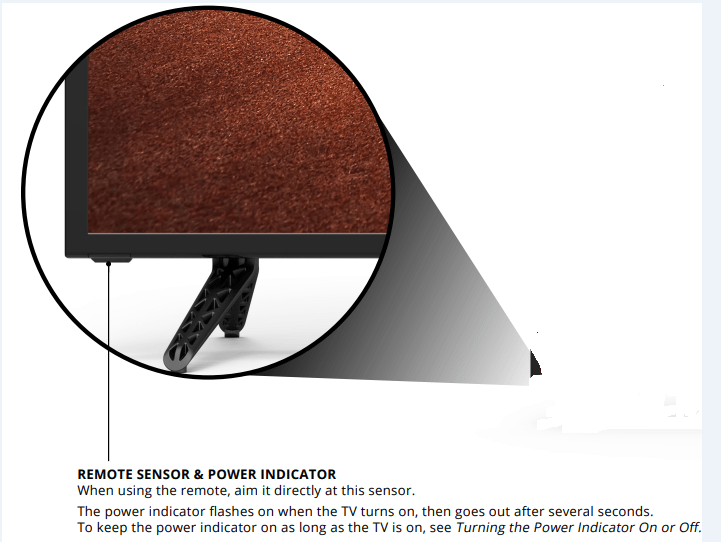
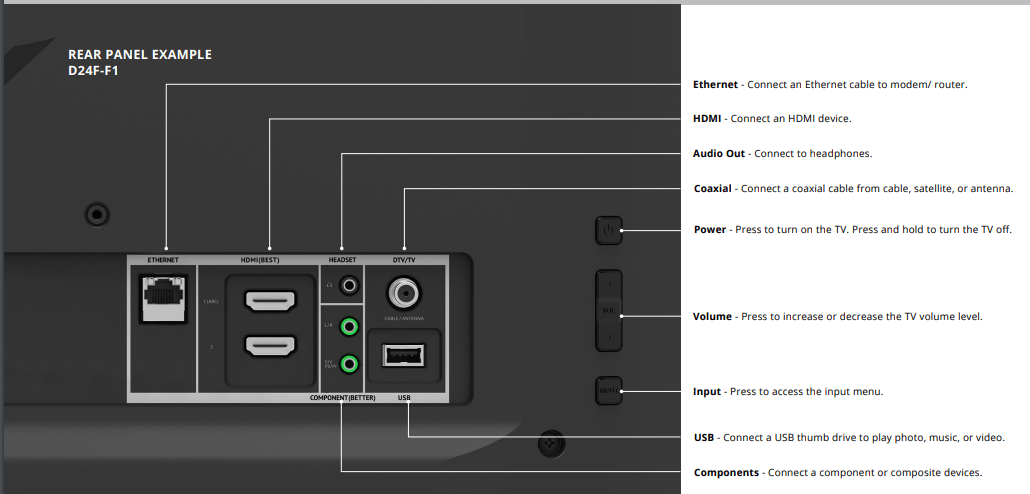
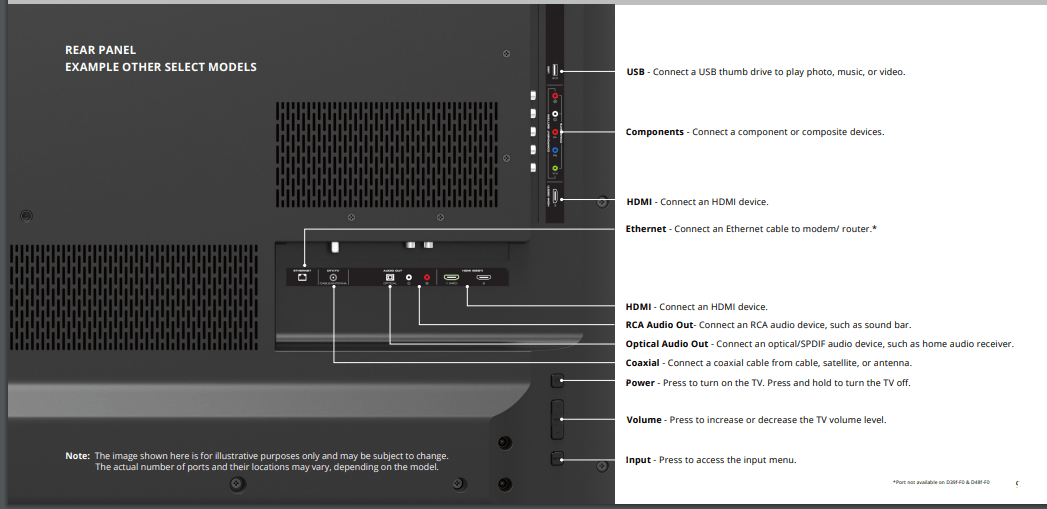
WALL-MOUNTING THE TV
To mount your TV on a wall, you will need a wall mount. Consult the information on this page to find the appropriate mount for your TV. Be sure the mount you choose is capable of supporting the weight of the TV. After you have determined that you have the correct mount for your TV, you can begin the installation. To install your TV on a wall:
1. Disconnect any cables connected to your TV.
2. Place the TV face-down on a clean, flat, stable surface. Be sure the surface is clear of debris that can scratch or damage the TV.
3. Remove the stands by loosening and removing the screws.
4. Attach your TV and wall mount to the wall, carefully following the instructions that came with your mount. Use only with a UL-listed wall mount bracket rated for the weight/load of this TV.
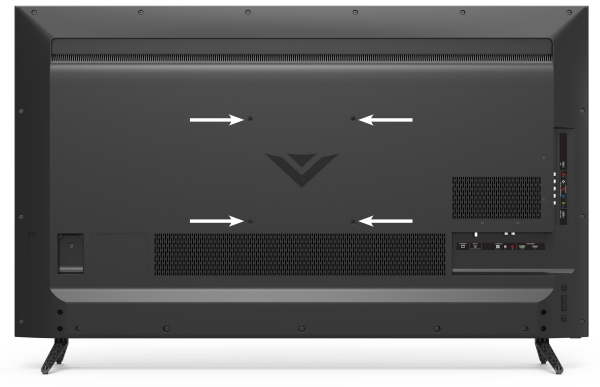

USING THE REMOTE
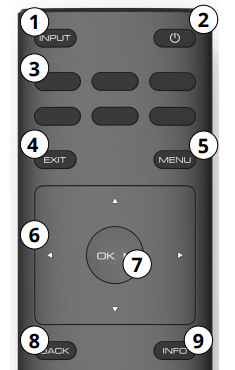
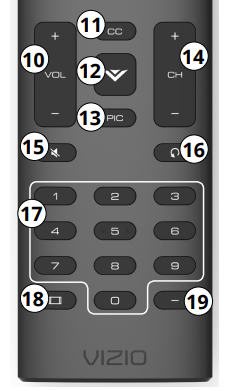
1. Input - Change the currently displayed input
2. Power - Turn Television on or off
3. App Launcher - Quickly launch the pictured app
4. Exit - Close the on-screen menu
5. Menu - Display the settings menu
6. Arrow - Navigate the on-screen menus
7. OK/Play/Pause - Select the highlighted menu option and play or pause content
8. Back - Go to the previous on-screen menu
9. Info - Display the info window
10. Volume Up/Down - Increase or decrease the loudness of the audio
11. Closed Caption - Open the closed caption menu.
12. V Button - Launch SmartCast TV/Return to SmartCast TV Home Screen
13. Pic - Cycle through the different picture setting modes
14. Channel Up/Down- Change the channel.
15. Mute - Turn the audio on or off
16. Last - Return to the last viewed channel..
17. Number Pad - Manually enter a channel
18. Wide - Change the Television mode.
19. Dash - Use with number pad to manually enter a digital sub-channel. (e.g. 18-4 or 18-5)
Replacing the Batteries
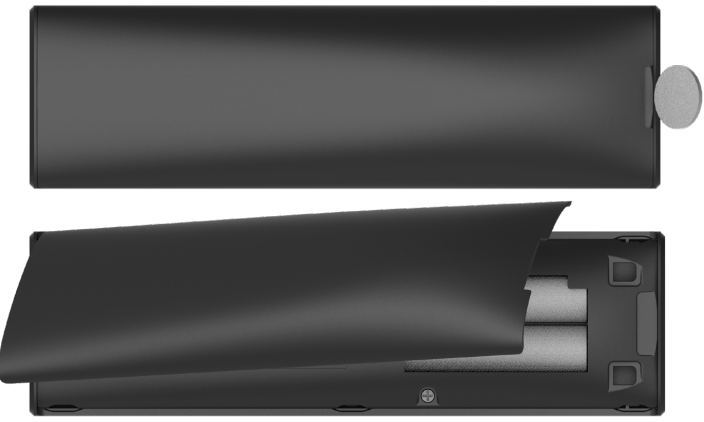
1. Find the notch on the back of the remote. Insert a coin and pry open the back cover.
2. Insert two batteries into the remote control. Make sure that the (+) and (-) symbols on the batteries match the (+) and (-) symbols inside the battery compartment.
3. Replace the battery cover.
Completing The First-Time Setup
The first time you turn on the TV, the on-screen instructions will guide you through each of the steps necessary to get your TV ready for use:
Before you begin the first-time setup:
• Your Television should be installed and the power cord should be connected to an electrical outlet.
• If you have a wireless network, have the network password ready.
• If you are connecting to your network with an Ethernet cable, connect it to the Ethernet port* on the Television.
1. Choose your language.
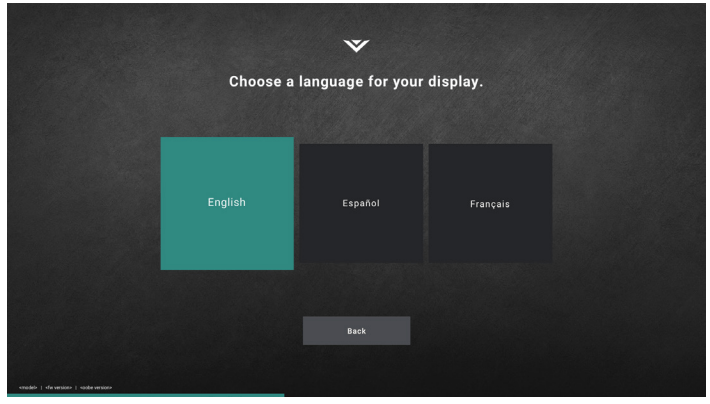
2. Choose home use.
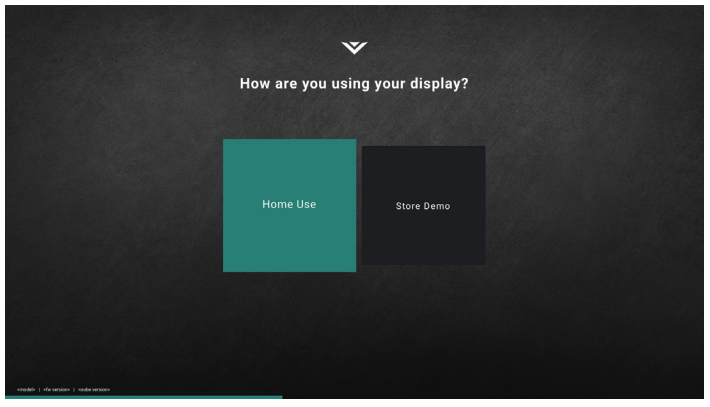
3. Choose your country
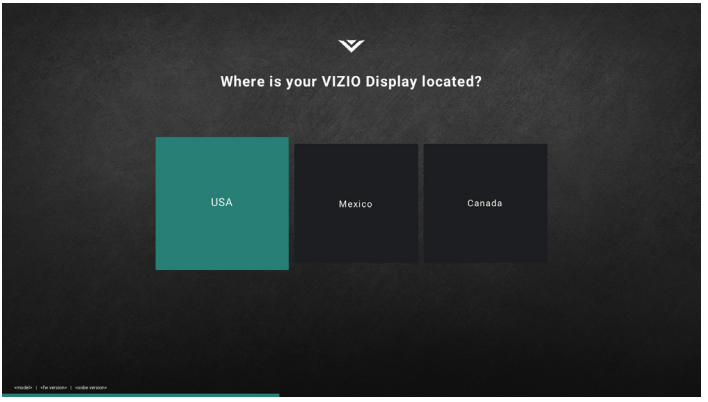
4. Choose your Wi-Fi and enter the password.
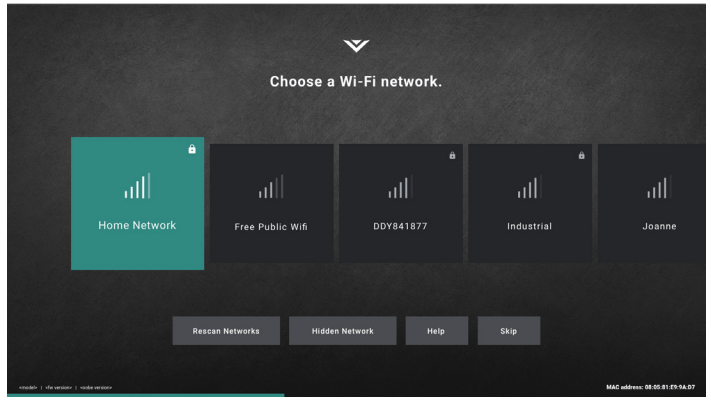
5. Name your TV.
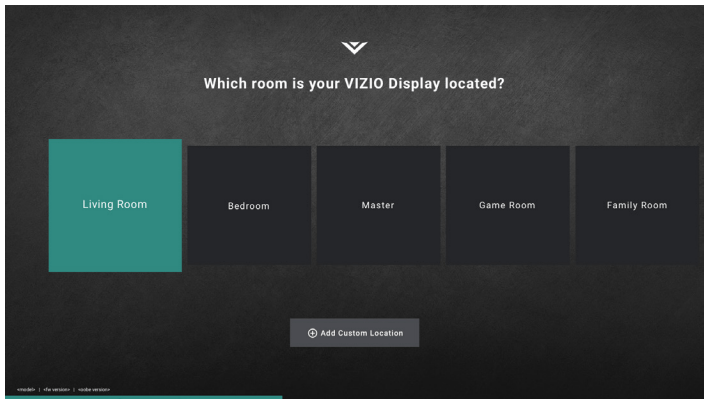
6. Scan for channels

7. Accept the T&Cs and register your device.
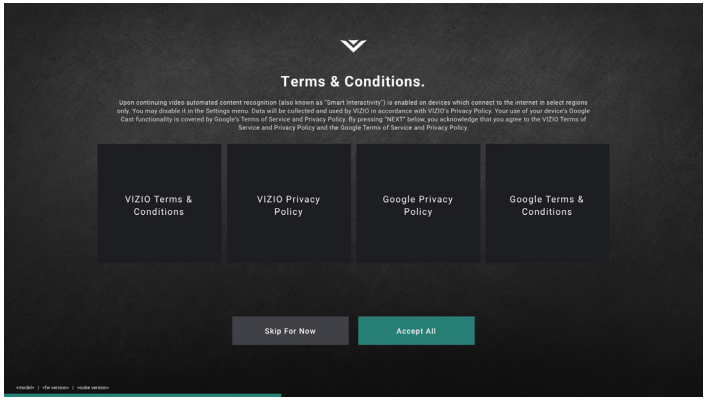
All set!

Using the On-Screen Menu
Your TV features an easy-to-use on-screen menu. To open the on-screen menu, press the Menu button on the remote. From this menu, you can:
• Adjust the Picture settings
• Adjust the Audio settings
• Adjust the Network settings
• Set up the Timers
• Adjust the Channel settings
• Set up Closed Captioning
• Name and adjust Inputs
• Adjust TV settings
• View user manual
TV Settings
 Picture
Picture
 Audio
Audio
 Network
Network
 Timers
Timers
 Channels
Channels
 Closed Captions
Closed Captions
 Inputs
Inputs
 System
System
 User Manual
User Manual
NAVIGATING THE ON-SCREEN MENU
To open the on-screen menu, press the Menu button on the remote. Use the Arrow buttons to highlight a menu option, and press the OK button to select that option.
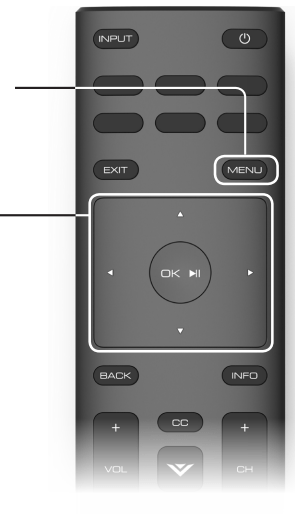
CHANGING THE INPUT SOURCE
External devices such as DVD players, Blu-ray Players, and video game consoles can be connected to your TV. To use one of these devices with your TV, you must first change the input source using the INPUT menu. To change the input sources:
1. Press the Input button on the remote. The INPUT menu is displayed.
2. Use the Right/Left Arrow buttons or the Input button on the remote to highlight the input you wish to view and press OK. The selected input is displayed.

ADJUSTING THE PICTURE SETTINGS
Your TV display can be adjusted to suit your preferences and viewing conditions.
To adjust the picture settings:
1. Press the Menu button on the remote. The on-screen menu is displayed.
2. Use the Arrow buttons on the remote to highlight Picture and press OK. The PICTURE menu is displayed.
3. Use the Arrow buttons on the remote to highlight Picture Mode, then use the Left/Right Arrow buttons to change the picture mode:
• Standard mode sets the picture settings to the default settings.
• Calibrated mode sets the picture settings to values ideal for watching TV in a brightly-lit room.
• Calibrated Dark mode sets the picture settings to values ideal for watching TV in a dark room.
• Vivid mode sets the picture settings to values that produce a brighter, more vivid picture.
• Game mode reduces throughput delays and optimizes the picture settings for displaying game console output.
• Computer mode optimizes the picture settings for displaying computer output.
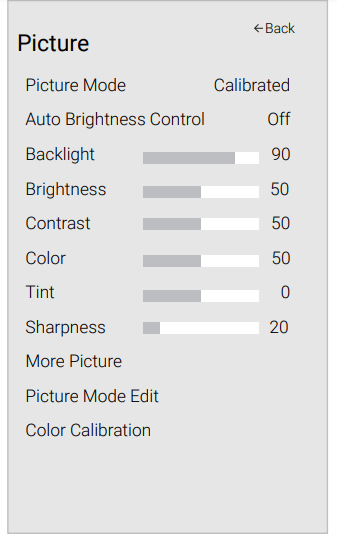
4. To manually change each of the picture settings, use the Up/ Down Arrow buttons on the remote to highlight that picture setting, then use the Left/Right Arrow buttons to adjust the setting:
• Auto Brightness Control - The auto brightness control detects the light levels in the room and automatically adjusts the backlight for the best picture. Select Off, Low, Medium, or High.
• Backlight - Adjusts the LED brightness to affect the overall brilliance of the picture. Backlight cannot be adjusted when starting from some picture modes.
• Brightness - Adjusts the black level of the picture. When this setting is too low, the picture may be too dark to distinguish details. When this setting is too high, the picture may appear faded or washed out.
• Contrast - Adjusts the white level of the picture. When this setting is too low, the picture may appear dark. When this setting is too high, the picture may appear faded or washed out. If the setting is too high or too low, detail may be difficult to distinguish in dark or bright areas of the picture.
• Color - Adjusts the intensity of the picture colors.
• Tint - Adjusts the hue of the picture. This setting is useful in adjusting the flesh tones in the picture. If flesh appears too orange, reduce the level of color before adjusting tint.
• Sharpness - Adjusts the edge sharpness of picture elements. It can be used to sharpen non-HD (high definition) content; however, it will not produce detail that does not otherwise exist.
5. When you have finished adjusting the picture settings, press the Exit button on the remote.
Adjusting More Picture Settings
To adjust MORE PICTURE settings:
1. From the PICTURE menu, use the Arrow buttons to highlight More Picture, and then press OK.
2. Use the Arrow buttons to highlight the setting you wish to adjust, then press the Left/ Right Arrow buttons to change the setting:
• Color Temperature - See Adjusting the Color Temperature.
• Black Detail - Adjusts the average brightness of the picture to compensate for large areas of brightness. Select Off, Low, Medium, or High.
• Backlight Control - Reduces blue in scenes with fast action. Some sensitive viewers
• Reduce Noise - Opens a sub-menu with two settings.:
• Reduce Signal Noise - Diminishes artifacts in the image caused by the digitizing of image motion content. Select Off, Low, Medium, or High.
• Reduce Block Noise - Reduces pixelation and distortion for .MPEG files. Select Off, Low, Medium, or High.
• Game Low Latency - Select On to reduce video delay (lag) when gaming.
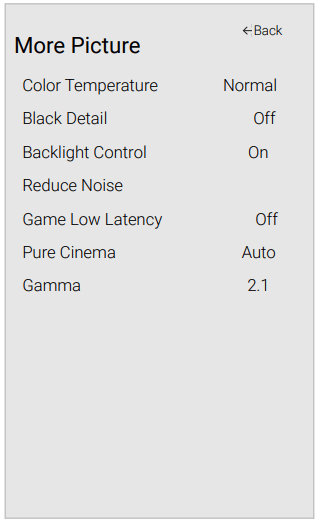
• Pure Cinema Mode - Optimizes the picture for watching film. Select Auto or Off.
• Gamma - Set the shape of the Gamma curve. Use lower Gamma values for bright room conditions, and higher values when it’s dark.
3. When you have finished adjusting MORE PICTURE Settings, press the Exit button on the remote.
Adjusting the Color Temperature
Adjusting the color temperature changes the white balance of the picture.
To adjust the color temperature:
1. From the MORE PICTURE menu, use the Arrow buttons to highlight Color Temperature, and then press OK.
2. Use the Arrow buttons on the remote to highlight a color temperature preset and then press OK.
• Normal is optimized for television viewing.
• Cool produces a blue-hued picture.
• Computer optimizes the picture for use as a PC monitor.
3. When you have finished adjusting the color temperature, press the Exit button on the remote.
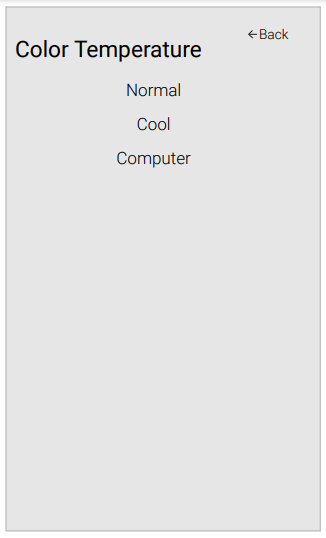
Adjusting the Picture Mode Edit Settings
Picture Mode Edit Settings allow you to make precise adjustments to the picture and to create picture modes to save groups of picture settings. To adjust the Picture Mode Edit settings:
1. From the PICTURE menu, use the Arrow buttons to highlight Picture Mode Edit, and then press OK. The PICTURE MODE EDIT menu is displayed.
2. Use the Arrow buttons to highlight the setting you wish to adjust, then press OK to change the setting:
• Save Picture Mode - Save a custom picture mode.
• Lock Picture Mode - Prevent changes to custom picture modes. Choose between On or Off
• Reset Picture Mode† - Reset the picture mode settings to factory default values.
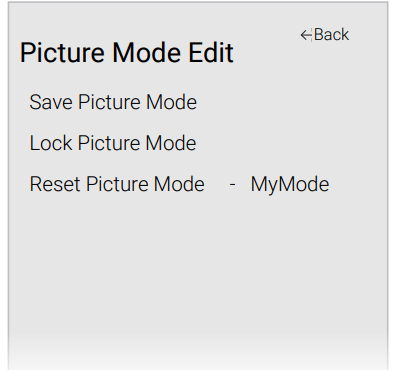
Saving a Custom Picture Mode
Custom picture modes allow you to save a group of custom settings for various viewing conditions and video sources.
• Changes made while on any preset picture mode will add an asterisk on the top right corner of the preset mode.
• The custom picture mode is not automatically saved. To save a custom picture mode:
1. From the PICTURE MODE EDIT menu, use the Arrow buttons to highlight Save Picture Mode, and then press OK. The SAVE PICTURE MODE menu is displayed.
2. Use either on-screen keyboard to enter a name for your custom picture mode.
3. Highlight Save and press OK.
4. Press the Exit button to exit the menu screens.
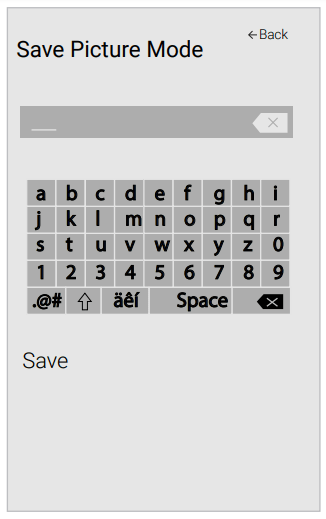
Locking/Unlocking a Custom Picture Mode
Custom picture modes can be locked/unlocked with a unique PIN to prevent accidental changes to their settings.
To lock all custom picture modes:
1. From the PICTURE MODE EDIT menu, use the Arrow buttons to highlight Lock Picture Mode, and then press OK. The LOCK PICTURE MODE menu is displayed.
2. Use the Number Pad on your remote to enter a unique 4-digit PIN. If a system PIN is set, then lock/unlock. If no system PIN is set, then you will be prompted to set a PIN.
3. Highlight Save and press OK.
4. Press the Exit button to exit the menu screens.
To unlock all custom picture modes:
1. From the PICTURE MODE EDIT menu, use the Arrow buttons to highlight Unlock Picture Mode, and then press OK. The UNLOCK PICTURE MODE menu is displayed.
2. Use the Arrow buttons to select Off.
3. Use the Number Pad on your remote to enter your 4-digit PIN.
4. Make any desired changes to the picture modes.
5. Then turn on Lock Picture Mode.
6. Press the Exit button to exit the menu screens.
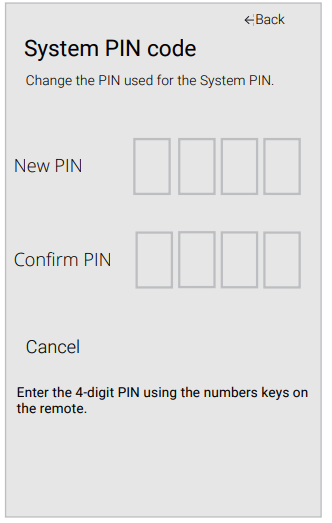
Deleting a Custom Picture Mode
Custom picture modes that are no longer needed can be deleted
To delete a custom picture mode:
1. From the PICTURE MODE EDIT menu, use the Arrow buttons to highlight Delete Picture Mode, and then press OK. The DELETE PICTURE MODE window is displayed.
2. Use the Left/Right Arrow buttons to highlight Delete and press OK .
3. Press the Exit button to exit the menu screens.
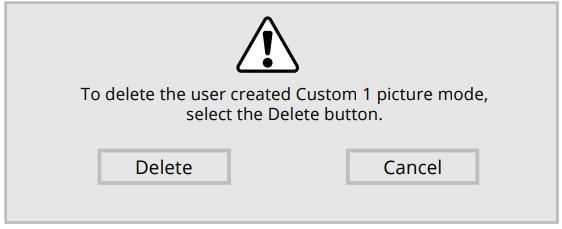
Resetting a Picture Mode
A preset picture mode that has been edited can be restored to the factory default settings. To reset a customized preset picture mode:
1. From the PICTURE MODE EDIT menu, use the Arrow buttons to highlight Reset Picture Mode, and then press OK. The RESET PICTURE MODE window is displayed.
2. Use the Left/Right Arrow buttons to highlight Reset and press OK .
3. Press the Exit button to exit the menu screens.
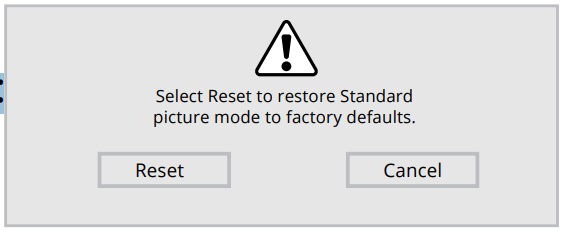
Adjusting the Color Tuner Settings
The COLOR TUNER settings allow you to adjust the HSB color and 11 point white balance, turn color channels off for testing, and display color bar, flat, and ramp test patterns.
To adjust the HSB color settings:
1. From the COLOR CALIBRATION menu, use the Arrow buttons to highlight Color Tuner, and then press OK. The COLOR TUNER menu is displayed.

2. Use the Arrow buttons on the remote to highlight the Hue, Saturation, Brightness, Offset, or Gain of the color you wish to adjust. Press the OK button.
3. Use the Left/Right Arrow buttons to adjust the value. When you are finished press the OK button to save the setting.
4. When you are finished adjusting the color tuner settings, press the Exit button.
To turn color channels off and on:
1. From the COLOR CALIBRATION menu, use the Arrow buttons to highlight Color Tuner, and then press OK. The COLOR TUNER menu is displayed.

2. Use the Arrow buttons on the remote to highlight Red, Green, or Blue.
3. Press the OK button to turn the color channel off or on. An X appears over a color channel that has been turned off.
4. Use the Arrow buttons to highlight another color channel to turn off or on. Only two color channels can be turned off at the same time.
5. When you are finished with the color channels, press the Exit button.
To adjust the 11 Point White Balance settings:
1. From the Color Tuner menu, use the Arrow buttons to highlight Color Tuner, and then press the Left/Right Arrow buttons until the 11 POINT WHITE BALANCE menu is displayed.

2. Use the Arrow buttons on the remote to highlight the Gain and Color values you wish to adjust. Press the OK button and use the Left/Right Arrow buttons to adjust the value. When you are finished, press the OK button to save the setting.
3. When you are finished, press the Exit button.
To show or hide the SMPTE Test Pattern:
1. From the Color Tuner menu, use the Arrow buttons to highlight Color Tuner, and then press the Left/Right Arrow buttons until the SMPTE TEST PATTERN menu is displayed.

2. Use the Arrow buttons on the remote to highlight Off. Use the Left/Right Arrow buttons to highlight On to show the SMPTE Pattern.
—or—
To hide the SMPTE Test Pattern, use the Left/Right Arrow buttons to highlight Off.
3. When you are finished, press the Exit button.
To show or hide the Flat Test Pattern:
1. From the Color Tuner menu, use the Arrow buttons to highlight Color Tuner, and then press the Left/Right Arrow buttons until the FLAT TEST PATTERN menu is displayed.

2. Use the Arrow buttons on the remote to highlight Off. Use the Left/Right Arrow buttons to select the percentage brightness for the flat test pattern. Selecting a percentage immediately shows the flat pattern at that brightness.
—or—
To disable the Flat Test Pattern, use the Left/Right Arrow buttons to highlight Off.
3. When you are finished, press the Exit button.
To show or hide the Ramp Test Pattern:
1. From the Color Tuner menu, use the Arrow buttons to highlight Color Tuner, and then press the Left/Right Arrow buttons until the RAMP TEST PATTERN menu is displayed.

2. Use the Arrow buttons on the remote to highlight Off. Use the Left/Right Arrow buttons to select the color for the ramp test pattern. Selecting a color immediately shows that color ramp.
—or—
To hide the Ramp Test Pattern, use the Left/Right Arrow buttons to highlight Off.
3. When you are finished, press the Exit button.
To show or hide the Uniformity Analyzer Test Pattern:
1. From the Color Tuner menu, use the Arrow buttons to highlight Color Tuner, and then press the Left/Right Arrow buttons until the UNIFORMITY ANALYZER TEST PATTERN menu is displayed.

2. Use the Arrow buttons on the remote to highlight Off. Use the Left/Right Arrow buttons to highlight On to show the Uniformity Analyzer Test Pattern.
—or—
To hide the Uniformity Analyzer Test Pattern, use the Left/ Right Arrow buttons to highlight Off.
3. When you are finished, press the Exit button.
SETTING TIMERS
Setting the Timer
When activated, the TV’s timer will turn the TV off after a set period of time.
1. Press the Menu button on the remote. The on-screen menu is displayed.
2. Use the Arrow buttons on the remote to highlight Timers and press OK. The TIMERS menu is displayed.
3. Use the Left/Right Arrow buttons on the remote to highlight the period of time after which you want the TV to go to sleep: 30, 60, 90, 120, or 180 minutes. If you don’t want the sleep timer to activate, change the setting to Off.
4. When you have finished setting the sleep timer, press the Exit button on the remote.
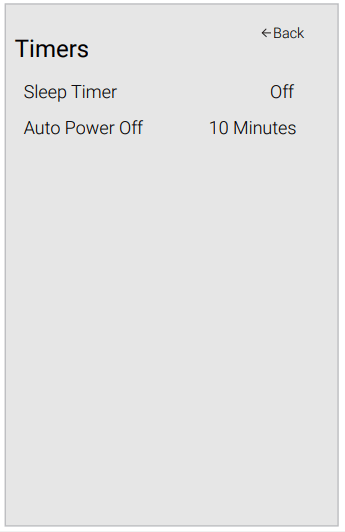
Setting the Auto Power Off Feature
To help save energy, your TV is set by default to turn off after 10 minutes without a video or audio signal. This feature can be deactivated. To set the Auto Power Off feature:
1. From the TIMERS menu, use the Up/Down Arrow buttons on the remote to highlight Auto Power Off.
2. Use the Left/Right Arrow buttons on the remote to change whether the TV will turn off. If you don’t want the TV to turn off when there is no signal, change the setting to Off. Otherwise, select 10 minutes.
3. When you have finished setting the auto power off time, press the Exit button on the remote.
SETTING UP CHANNELS
You can use the TV’s Channels menu to:
• Find Channels
• Select channels to skip
• Analog Audio
• Digital Audio
• Set Parental Controls

Scanning for Channels
The TV may need to scan for channels before it can display programs and their associated information. A channel scan is required for free over-the-air channels (using an antenna) and cable channels from an out-of-the-wall connection (without a cable box). Moving the TV to an area with different channels requires the TV to scan for channels again.
To perform an Auto Channel Scan:
1. From the CHANNELS menu, highlight Find Channels, and press OK. The auto channel scan begins.
2. Wait until the channel scan is 100% complete. Highlight Done and press OK.
3. Press the Exit button on the remote.
If the channel scan is cancelled, the channels that were already discovered are retained. A new channel scan will clear all channels.
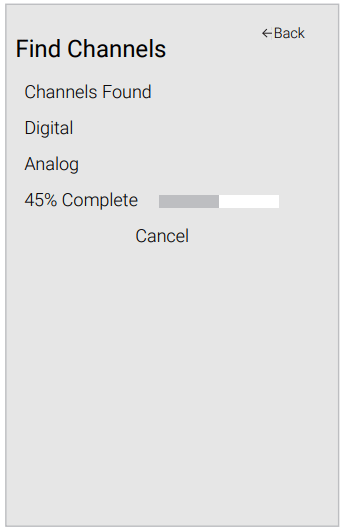
Skipping Channels
After a channel scan is completed, you may find that some channels are too weak to watch comfortably. There may also be some channels you do not want to view. You can remove these channels from the TV’s memory with the Skip Channel feature.
To remove a channel:
1. From the CHANNELS menu, highlight Skip Channel, and press OK. The SKIP CHANNEL menu is displayed.
2. For each channel you wish to remove, use the Up/Down Arrow buttons on the remote to highlight the channel and press OK. A √ appears to the right of each channel you select.
3. When you have selected all of the channels you wish to remove, press the Exit button on the remote.
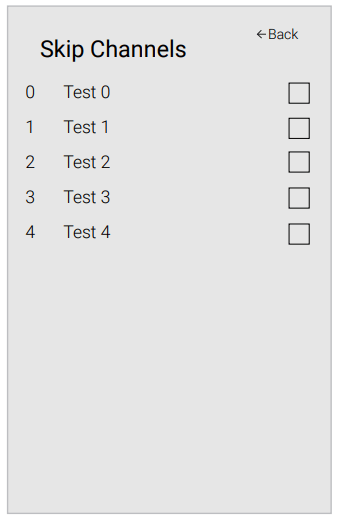
CHANGING THE TV SETTINGS
Using the SYSTEM menu, you can:
• Check for updates
• View system information
• Change the on-screen menu language
• Set time zone and local settings
• Adjust the CEC settings
• Adjust the Power Mode
• Adjust the aspect ratio
• Name the Display
• Review and maintain the list of paired devices
• Adjust accessibility settings
• Reset the Display settings & set up administrative controls

Checking for System Updates
To check for system updates:
1. Press the Menu button on the remote. The on-screen Menu is displayed.
2. Use the Arrow buttons on the remote to highlight Check for Updates and press OK. The Display will begin to check for updates.
3. If an update is found, the Display will ask to confirm the update. If no update is found, the display will note No Update Available.
Viewing System Information
To view technical data and status information about your TV and network connection:
1. Press the Menu button on the remote. The on-screen menu is displayed.
2. Use the Arrow buttons on the remote to highlight System and press OK. The SYSTEM menu is displayed.
3. Highlight System Information and press OK.
4. Use the Up/Down Arrow buttons to scroll through the system information.
5. When you are finished reviewing the system information, press the Exit button on the remote.
Changing the On-Screen Menu Language
Your TV can display the on-screen menu in different languages. To change the on-screen menu language:
1. Press the Menu button on the remote. The on-screen menu is displayed.
2. Use the Arrow buttons on the remote to highlight System and press OK. The SYSTEM menu is displayed.
3. Use the Arrow buttons on the remote to highlight Menu Language and press OK. The MENU LANGUAGE menu is displayed.
4. Highlight your preferred language (English, Español, or Français) and press OK.
5. Press the Exit button on the remote

Setting the Time and Local Settings
To ensure the correct time is displayed when you press the INFO button, set the TV’s time zone:
1. Press the Menu button on the remote. The on-screen menu is displayed.
2. Use the Arrow buttons on the remote to highlight System and press OK. The SYSTEM menu is displayed.
3. Use the Arrow buttons on the remote to highlight Time & Local Settings and press OK. The menu headed by the local date and time is displayed.
4. Highlight Time Zone and press OK. The TIME ZONE menu is displayed.
5. Highlight your time zone and press OK.
6. Highlight Daylight Saving Time and press OK. The DAYLIGHT SAVING TIME menu is displayed. Choose On if it is currently Daylight Savings Time, Off if it is Standard Time, or Auto to have the system automatically detect Daylight Savings Settings.
7. Press the Exit button on the remote.
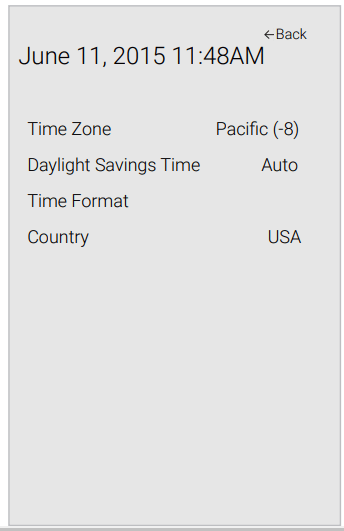
Adjusting the CEC Settings
The CEC function on your TV enables you to control devices connected to HDMI (ARC) input with the included remote, without any programming. Using CEC, your VIZIO TV remote can control:
• Power On/Off
• Volume
• Mute
To enable, disable, or adjust CEC settings:
1. Set up your audio device and connect it to the HDMI-1(HDMI Arc) input on the TV
2. On your audio device, select the HDMI ARC input
3. Press the Menu button on the remote. The on-screen menu is displayed.
4. Use the Arrow buttons on the remote to highlight System and press OK. The SYSTEM menu is displayed.
5. Use the Arrow buttons on the remote to highlight CEC and press OK. The CEC menu is displayed.
6. Highligh CEC and press OK. Select a setting and then press OK.
• CEC - To use CEC, you must select Enable.
• Device Discovery - To determain if your device is connected and supports CEC, select Device Discovery and then press OK.
7. Press the Exit button on the remote.
Turning the Power Indicator On or Off
The Power Indicator on the front of your TV normally does not glow when the TV is on. You can change this setting if you prefer the light to be on.
To turn the Power Indicator Light On or Off:
1. Press the Menu button on the remote. The on-screen menu is displayed.
2. Use the Arrow buttons on the remote to highlight System and press OK. The SYSTEM menu is displayed.
3. Highlight Power Indicator and press OK.
4. Use the Up/Down Arrow buttons to select On or Off, then press OK.
Changing the TV Name
Naming your TV helps differentiate it from other cast devices you may have in your home.
To view your TV name:
1. Press the Menu button on the remote. The on-screen menu is displayed.
2. Use the Arrow buttons on the remote to highlight System and press OK. The SYSTEM menu is displayed.
3. Use the Arrow buttons on the remote to highlight TV Name and press OK. The TV Name is displayed.
4. Enter your custom name using the on-screen keyboard. 5. Press the Exit button on the remote.

USING THE RESET & ADMIN MENU
You can use the TV’s RESET & ADMIN menu to restore the TV to its factory default settings as well as access other system settings. Using the RESET & ADMIN, you can:
• Reset the TV to factory settings
• Force the system to power off and on
• Create a system pin code to lock content and picture settings
• Enable or disable program offers and suggestions
• Enable or disable anonymous debug data for system performance.
• Start or stop the Store Demo Mode

Restoring the TV to Factory Default Settings
All of the on-screen menu settings can be reset to the factory defaults.
To restore the TV to its factory default settings:
1. Press the Menu button on the remote. The on-screen menu is displayed.
2. Use the Arrow buttons on the remote to highlight System and press OK. The SYSTEM menu is displayed.
3. Highlight Reset & Admin and press OK. The RESET & ADMIN menu is displayed.
4. Highlight Reset to Factory Defaults and press OK. If you have changed the set system PIN, enter it now. The TV displays, “Select Reset to restore all TV settings to factory defaults and clear all account information.”
5. Highlight Reset and press OK.
6. Wait for the TV to turn off. The TV will turn back on shortly afterward and the Setup App will begin.
SET SYSTEM PIN
You can set a System PIN to use:
1. Picture mode lock
2. Parental controls
3. Reset to TV to factory default setting
The first time you select System PIN code, you will enter a PIN. The next time you open System PIN code, you can reset your PIN code

Troubleshooting
The remote is not responding.
• Make sure the batteries are properly inserted matching the - and + symbols.
• Replace the batteries with fresh ones.
The TV displays “No Signal.”
• Press Input button on the remote control to select a different inpput source.
• If you are using cable TV or antenna connected directly to the TV, scan for channels. See Scanning for Channels.
There is no power.
• Ensure the TV is plugged into a working electrical outlet.
• Ensure the power cable is securely attached to the TV.
• Press the Power/Standby button on the remote or on the back of the TV to turn the TV on.
The power is on, but there is no image on the screen.
• Ensure all cables are securely attached to the TV.
• Ensure all devices are connected correctly. Devices differ; see your device’s user manual for details.
• Adjust Brightness, Contrast, or Backlight. See Adjusting the Picture Settings.
• Press the Input button on the remote to select a different input source.
I see “noise” or static on the screen.
• When your TV’s digital capabilities exceed a digital broadcast signal, the signal is up-converted (improved) to match your TV’s display capabilities. This up-converting can sometimes cause irregularities in the image.
• If you are using an antenna, the signal strength of the channel may be low. Ensure your antenna is connected securely to the TV and move the antenna around the room or close to a window for the best signal.
There is no sound.
• Press Volume Up on the remote control.
• Press the Mute button on the remote to ensure mute is off.
• Check the audio settings. See Adjusting the Audio Settings.
• Check the audio connections of external devices (Blu-ray player, game console, cable/satellite box) that are connected to the TV.
• If you are using an antenna, the signal strength of the channel may be low. Ensure your antenna is connected securely to the TV and move the antenna around the room or close to a window for the best signal.
The sound is flat or dialog is not audible.
• Turn off Volume Leveling. See Adjusting the Audio Settings.
The colors on the TV don’t look right.
• Adjust the Color and Tint settings in the Picture menu. See Adjusting the Picture Settings.
• Select a pre-set picture mode. See Adjusting the Picture Settings. VIZIO recommends selecting Calibrated.
• Check all cables to ensure they are securely attached.
The buttons on the remote aren’t working.
• Ensure you are only pressing one button at a time.
• Point the remote directly at the TV when pressing a button.
• Replace the remote batteries with new ones. See Replacing the Batteries.
The image quality is not good.
• For the best image quality, view high-definition programs using digital sources. Connect your devices with HDMI cables.
• If you are using an antenna, the signal strength of the channel may be low. Ensure your antenna is connected securely to the TV and move the antenna around the room or close to a window for the best signal.
The picture is distorted.
• Move the TV away from electrical appliances, cars, and fluorescent lights.
• Ensure all cables are securely attached.
The display image does not cover the entire screen.
• If you are using TV, AV, or Component with 480i input, press the button on the remote to change the screen mode.
button on the remote to change the screen mode.
The TV has pixels (dots) that are always dark.
• Your HD TV is precision-manufactured using an extremely high level of technology. However, sometimes pixels may not display correctly. These types of occurrences are inherent to this type of product and do not constitute a defective product.
When I change input source, the display image changes size.
• The TV remembers the viewing mode on each input source. If the viewing mode on the new input source differs from the one on the input source you switch from, the difference may be noticeable.
• See Changing the Screen Aspect Ratio.
How do I watch Cable/Antenna TV channels?
• If you subscribe to cable or satellite, simply connect an HDMI cable (not included) to the receiver.
• If you use external antennas to watch local broadcast channels, connect via coaxial.
How do I change the Inputs?
• Press the Input button on the back of the TV to cycle through the Inputs.
• Press the Input button on the remote to cycle through the Inputs.
• If the VIZIO SmartCast™ App is installed on your phone or tablet, open he VIZIO SmartCast™ App. Tap on the Device list and select your TV. Tap on the Input key and select the Input of your choice
How do I connect to my Wi-Fi network?
• On your remote, press the Menu button then go to Network → Select your Wi-Fi name→ Enter password.
• If the VIZIO SmartCast™ App is installed on your phone or tablet, open the VIZIO SmartCast™ App. Tap on the device list and select your TV. Tap on the Settings icon → Network → Wireless Access Points. Select your Wi-Fi network from the list, enter the Wi-Fi password, and tap Connect.
How do I stream apps like Netflix and Youtube to my VIZIO SmartCast™ TV?
• Launch SmartCast TVSM. Press the V Logo button on your remote or select SmartCast from the list of inputs.
on your remote or select SmartCast from the list of inputs.
• Download and open a Chromecast-enabled apps on your mobile device, such as like Netflix or Youtube. Then tap the Cast button.
How do I exit Demo Mode?
• Press and hold the Input button on the back of the TV to exit the demo mode
How do I download the VIZIO SmartCast™ App?
• Make sure your phone or tablet is connected to a Wi-Fi network. Open a browser on your phone or tablet. Navigate to vizio.com/smartcastapp and follow the on-screen instructions to download the VIZIO SmartCast™ App.
Specifications




See other models: D32H-G9 D55-E0 E370-A0 E190VA D65-F1
